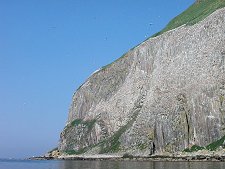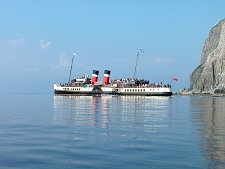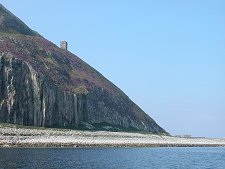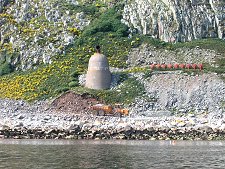|
Davie Law has captured some spectacular images of Ailsa Craig . Click on the photos below or the links to view them in several sizes. The 1024X768 sizes make wonderful desktop backgrounds. Click on one of these sizes and once the photo is open in your browser, right click and set as background or wallpaper. More photos on page 1 and page 3. Davie Law's photo is now on the BBC Radio Today programme site. Photo and story at The Great Puffin Revival. |
||||||||||||||
 |
||||||||||||||
|
||||||||||||||
 |
 |
|||||||||||||
| Gannet Colony | Paddle Boat Waverley & Ailsa Craig | Old fog horn and dump truck | ||||||||||||
| 507 x 380 │ 1024 x 768 | 507 x 380 │ 1024 x 768 | 507 x 380 │ 1024 x 768 | ||||||||||||
 |
 |
 |
||||||||||||
| Ailsa Craig Castle | "Squadron" of Gannets | Paddle Boat Waverley & Ailsa Craig | ||||||||||||
| 507 x 380 │ 1024 x 768 | 507 x 380 │ 1024 x 768 | 507 x 380 │ 1024 x 768 | ||||||||||||
 |
 |
 |
||||||||||||
| Ailsa Craig from the South | Ailsa Craig from the North | Ailsa Craig from the North | ||||||||||||
| 507 x 380 │ 1024 x 768 | 507 x 380 │ 1024 x 768 | 507 x 380 │ 1024 x 768 | ||||||||||||
|
A MAJOR operation is under way to take 1,500 tons of granite from Ailsa Craig — to meet the demand for new curling stones. And Scottish women’s curling successes in Olympic and World championships have given a boost to the six-week enterprise. For it is envisaged the game will gain new popularity in the wake of the triumphs. And Ayrshire firm Kays of Scotland are ready to produce new stones to meet the anticipated demand. Mauchline-based Kays have exclusive rights for the unique Ailsa Craig granite, and the firm has ferried heavy lifting machinery from Girvan harbour on to the rock. A company spokesman said: “Weather held us back, but we finally got the machinery on to the island, and we’re now ferrying granite twice or three times each day.”
Kays say the range will be promoted in a number of retail outlets including the Sweetie Shop in Girvan, the Turnberry golf pro shop, the Tam o’ Shanter Experience in Alloway, and the Scottish Craft Centre in Buchanan Street, Glasgow. Kays last took major shipments of granite from Ailsa Craig in 1989, although they have regularly collected smaller quantities as the need arose. (Article about Ailsa Craig and curling stones from the Ayrshire Post. August 2002)
|
||||||||||||||
|
|
||||||||||||||
|
Click here for sketches and a brief description of Ailsa Craig or here for a map and complete topographical details. More photos |
||||||||||||||




